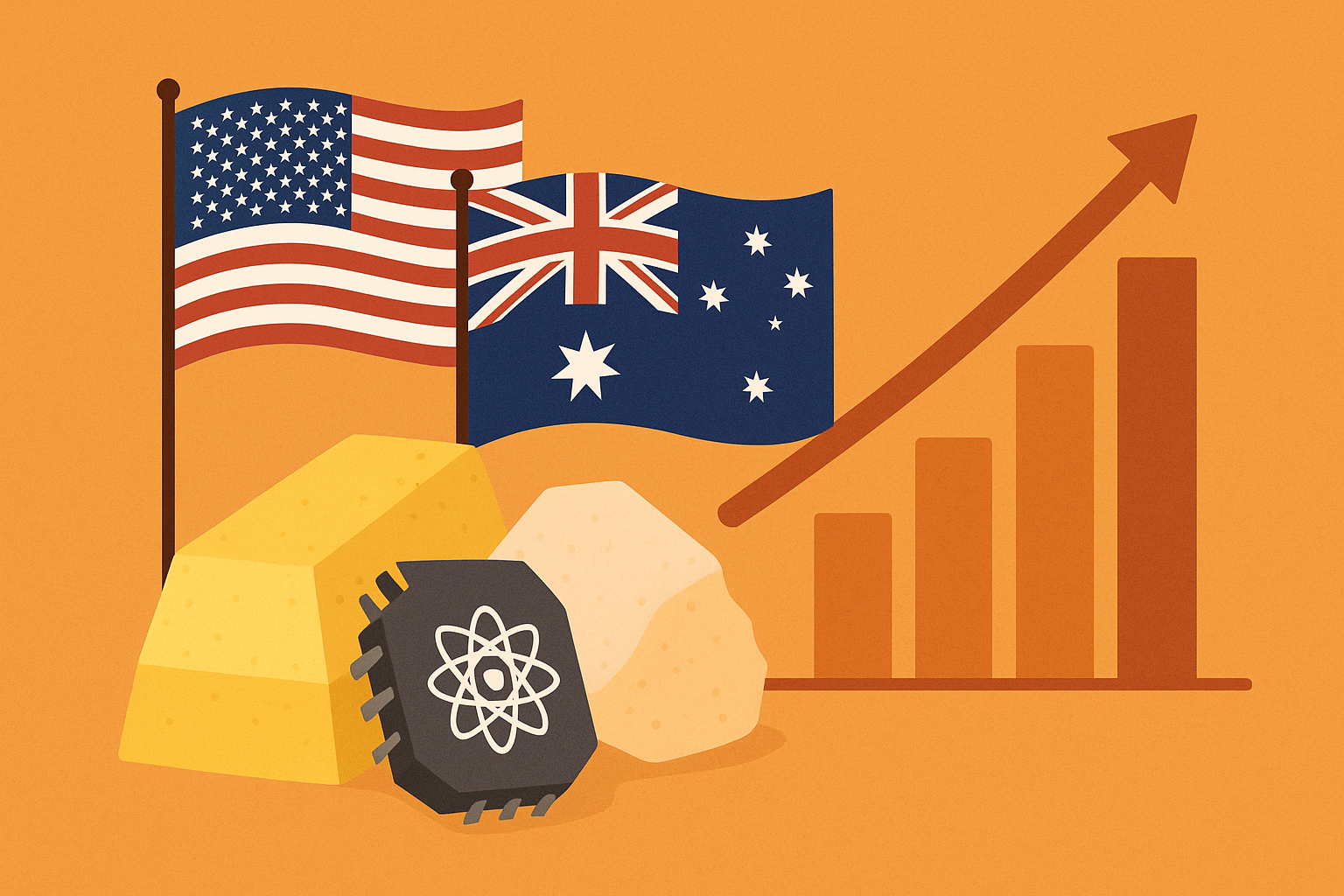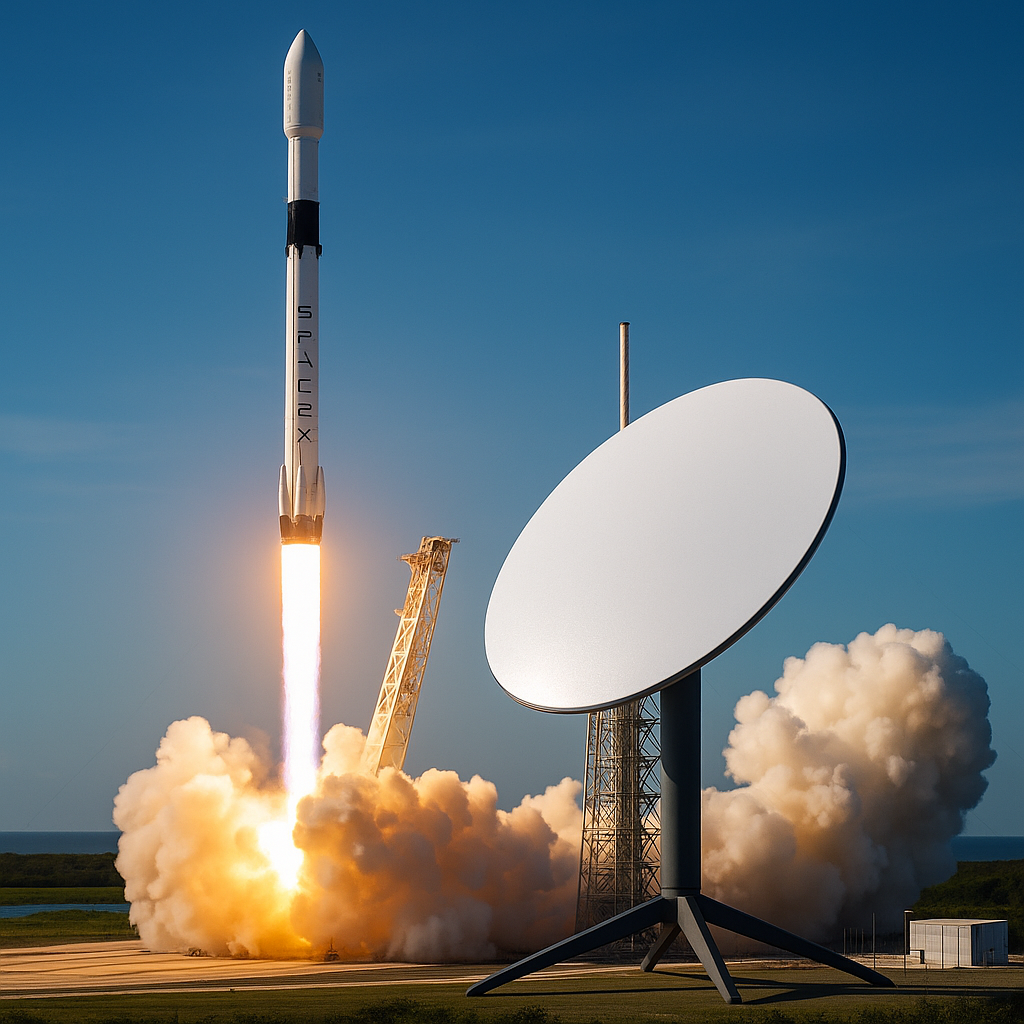The global race for resource independence just took a dramatic turn. The United States and Australia have formalized a US $2 billion-plus agreement—with potential expansion up to US $8.5 billion—to accelerate development in critical minerals such as rare earth elements, lithium, and gallium. The deal, announced on October 20, 2025, aims to strengthen Western control over materials vital to clean energy, defense technology, and semiconductor manufacturing, marking one of the most ambitious resource partnerships since the postwar industrial era.
According to Reuters, the pact forms part of a broader U.S. effort to “de-risk” supply chains dominated by China, which currently controls over 70% of global rare earth processing capacity. The investment will fund both upstream mining operations and midstream processing plants, with early projects focused on gallium refining and rare-earth separation facilities.
The market reaction was swift: shares of Australian mining companies including Lynas Rare Earths, Iluka Resources, and Arafura Rare Earths jumped sharply following the announcement, as investors digested what could become a multi-decade realignment in global resource trade flows.
A Strategic Play for Resource Sovereignty
This partnership represents far more than a financial commitment—it’s a geostrategic maneuver. For decades, China’s dominance in critical minerals has been both a strength and a vulnerability for Western economies, which rely on these inputs for technologies ranging from EV batteries and AI chips to defense systems.
By aligning with Australia, the U.S. gains a partner with both geological abundance and regulatory compatibility. Australia hosts more than 20% of the world’s lithium reserves and significant deposits of rare earth elements such as neodymium and dysprosium. The deal also leverages Australia’s established mining infrastructure, making it the ideal production hub for “friendly” supply chains.
“The United States cannot achieve clean energy and national security goals without diversifying its mineral dependencies,” noted a U.S. Department of Energy statement cited by Reuters. “This partnership is designed to ensure both resilience and transparency in the materials that power our modern economy.”
Why This Matters for Investors
For investors, this is not a short-term catalyst—it’s a long-term structural opportunity. The global transition toward electrification, renewable energy, and AI manufacturing hinges on access to rare earths and strategic metals.
According to BloombergNEF, global demand for rare earth elements is expected to triple by 2035, driven by EV motors, wind turbines, and semiconductor fabrication. Meanwhile, lithium demand could rise sixfold by 2040, supported by the battery revolution.
This new U.S.–Australia pact may catalyze capital flows into companies that specialize in critical-mineral exploration, processing, and technology adaptation. Yet, it also underscores the complexity of this space—these are capital-intensive projects with long lead times. Many of the companies benefiting today may not see revenue inflection points for several years.
For that reason, analysts recommend prioritizing firms with:
- Vertical integration from extraction to processing.
- Government-linked financing or strategic partnerships.
- ESG transparency and regulatory compliance, particularly as environmental standards tighten across OECD markets.
Future Trends to Watch
- Supply-Chain Realignment: Expect to see additional resource alliances among Western allies, possibly including Canada, Japan, and the European Union. Each aims to reduce dependence on China’s refining ecosystem.
- Public–Private Investment Surge: The U.S. Inflation Reduction Act and Australia’s Critical Minerals Strategy will likely direct billions more toward private-sector mining and tech collaborations.
- Price Volatility: As projects come online and Chinese policy responses evolve, rare earth and lithium prices may swing dramatically. This volatility creates both trading opportunities and risk exposure.
- M&A Acceleration: Larger mining and energy firms could acquire smaller critical-mineral startups to secure reserves and scale production capabilities.
Key Investment Insight
This is a multi-year thematic play, not a speculative rally. Investors seeking exposure to the critical-minerals space should take a portfolio approach—diversifying across mining, refining, and downstream technology sectors rather than betting on single stocks.
- Core Holdings: Established producers like Lynas Rare Earths and Iluka Resources with proven capacity and government contracts.
- Growth Opportunities: Emerging lithium and gallium developers with strategic offtake agreements.
- Indirect Exposure: Equipment, logistics, and renewable firms that benefit from infrastructure buildouts.
While the U.S.–Australia alliance signals a powerful step toward supply-chain sovereignty, it also highlights the scale and cost of rebalancing decades of global dependence. China’s grip won’t loosen overnight, but for patient investors, this is the foundation of a generational commodities trend.
Stay Ahead with MoneyNews.Today
The critical-minerals revolution is just beginning—and the winners will be those who understand how geopolitics, capital, and innovation intersect.
Stay with MoneyNews.Today for real-time coverage, expert insights, and in-depth market analysis on the forces reshaping tomorrow’s investment landscape.





